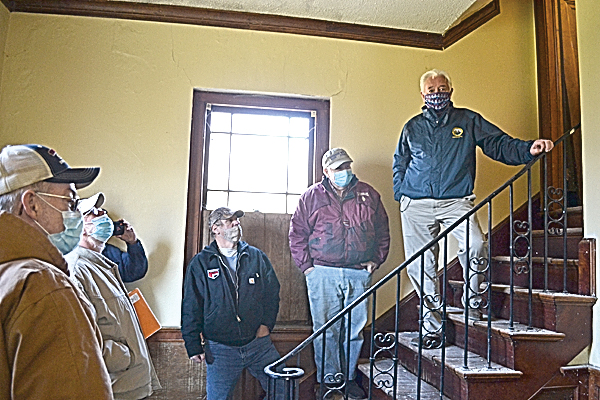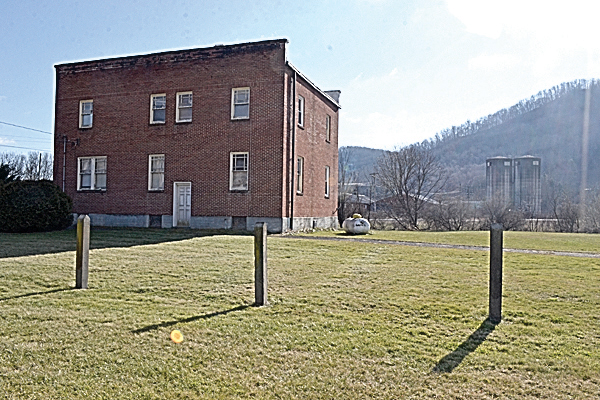

Suzanne Stewart
Staff Writer
Upper Pocahontas Community Cooperative and Pocahontas County commissioners Walt Helmick and John Rebinski led a tour through the former Frank Tannery office building last Saturday to ascertain if the building was salvageable for use.
A group of more than 20 individuals gathered in the front lobby of the building where Helmick and UPCC members explained why the organizations were interested in the building.
UPCC member Jason Bauserman said the original idea was to turn the building into a museum, sharing the history of the Frank Tannery, as well as the leather industry as a whole in Pocahontas County.
Helmick said he and Rebinski did a tour of the building with contractor Jacob Meck last Friday and said another contractor will tour the facility, as well. Both will provide estimates on what it would cost to fix the building, which has major water damage and needs a new roof.
“We’re going to get two different proposals of what it would cost to redo it from their point of view,” Helmick said. “I want to emphasize that we’d like to be able to do something with the building.”
Despite stating that the plan is to restore the building, several individuals voiced their concern about a rumor that the building was to be torn down to make way for a new building.
“The thing I was told is they want to tear this down and put a new building here for a museum,” Arbovale resident David Burner said. “This is a part of history, and you have a perfectly good building here, but you’ve got a little water damage. What’s it going to cost to tear this down, put fill dirt in and build a new building here? You can do a lot of work in here.”
Preservation of the building was a better option to many attending the tour who agreed that part of the Tannery’s history was the office building.
“A lot of history is disappearing nowadays, and if you want to show the history of the upper end of the county, why are you going to tear down the building?” Ryan Fedak asked. “To me, you’re going to put the money in to fix what you have and use what you have because this is the only thing left of the history of the tannery in this area.”
Others added that they were hoping the building could be used for more than just a historical museum.
Bauserman said that is one of the reasons for the tour and opening the building to the public for assessment because UPCC wants to hear ideas from everyone interested in the facility.
Burner questioned why the building was allowed to sit in disrepair for so long and Helmick said he was unsure why the county commission did not keep up maintenance on the building which has been in its possession since 1995.
“It was in good shape,” Helmick said. “But over the years, they used it. I wasn’t involved with it after the first year or so. But, the county used it for deputy sheriffs, they collected taxes here and did some voting in this building.
“As you see, it’s not in good shape,” he continued. “It’s obvious that work should have been done on it to keep it up. Having said that, I don’t know all the details of what the county commission did.”
John Simmons, a former Tannery employee and former county commissioner, said the roof was patched in 2000 when he was on the commission.
Among those taking the tour were several former employees of the Tannery and as they toured the building, they recalled what each room was used for and how they looked during operation.
Terry DeHaven, who worked at the tannery for 33 and a half years recalled that the second story of the building had a bedroom for the bosses when they came into town to check on the tannery’s operations. In the front office, he pointed out the windows at the last remaining structures of the tannery, including storage buildings and sawdust storage silos.
DeHaven also remembered coming into the office on payday and getting his paycheck which was kept in the large vault behind the main counter of the lobby.
As they toured the facility, former employees shared memories and gave their opinions on how the building should be restored as a museum or community building.


